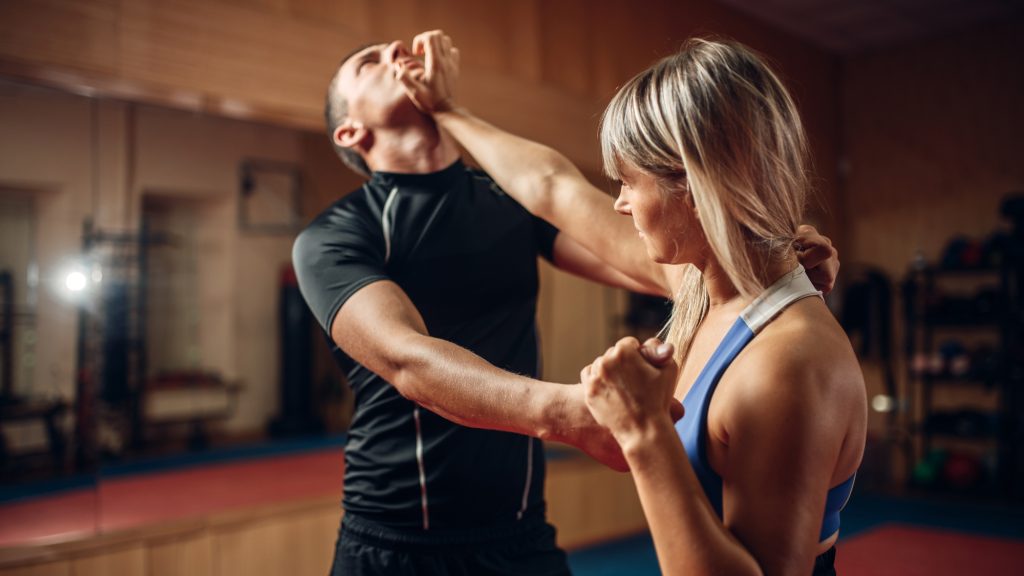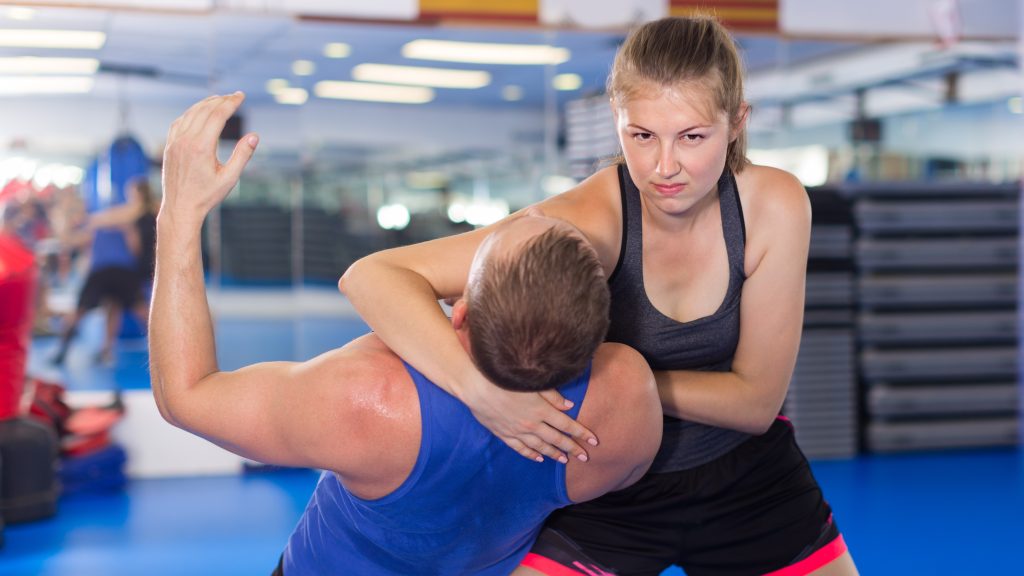
Although not as exciting as hiking Kilimanjaro or floating through the sky in a hot air balloon, participating in a self-defense class should be on everyone’s bucket list. It might not rise to the top of your must-do list, but self-defense classes teach critical skills that could come in handy when you least expect it—and keep you safe so you can conquer the rest of that bucket list.
Self-defense classes are offered by a wide range of organizations, from community centers to college campuses. While finding a program might be easy, be sure to do your research to ensure if offers exactly what you need and want. Self-defense classes range considerably, from degree of difficulty to teaching the use of weapons, and you want to know exactly what you’re walking into on your first day. Following are some key considerations when shopping around for the right self-defense class for you.
1. It’s Not Martial Arts
Self-defense does not equate to martial arts. Martial arts teach tactics that could be used for self-defense, but beginner-level instruction won’t teach skills you can realistically or confidently use in real-world situations. Enrolling in a martial arts training program is a much bigger training commitment, with long-term instruction expanding into territory not typical of self-defense training. Look for a program that specifically says “self-defense” and avoid anything labeled as martial arts, karate, or jiu jitsu.
2. Certified Instructors
Anyone who has been through self-defense training might think they’re qualified to teach a class, but that’s not always the case. When taking a self-defense training, you want assurances that your being taught the correct maneuvers, strategies, and positioning for success and to avoid injury. Look for a class with a certified instructor, which demonstrates:
• Long-term commitment to self-defense instruction
• Ability to tailor programs to a wide variety of clients
• Understanding of self-defense strategies
• Ability to teach situational awareness in addition to defensive postures
3. Instructor Gender
While your instructor’s gender is certainly a personal preference, oftentimes a woman prefers a female instructor who is more relatable. Conversely, some women prefer a male instructor they can train against, providing a more real-world scenario and therefore more realistic preparation. Give thought to your comfort level with both genders and seek a course accordingly.
4. Simplicity
The simplicity of the program should be a factor when selecting a self-defense class. These classes are meant for “everyday people” of varying ages and physical fitness levels. You are not training for a black belt in karate—you are simply seeking instruction to protect yourself in real-world scenarios. A self-defense class should include techniques that everyone in the room can perform easily, and hone those basic skills to perfection. A class that is too elevated or too intimidating increases the likelihood that a participant won’t return to complete the course.
5. Multi-faceted Instruction
A good self-defense course doesn’t just teach physical moves to use against an assailant. It should also focus on avoidance strategies, assertiveness, and communication skills in addition to easy-to-remember physical techniques. The course should offer a 360-degree perspective on self-defense, offering tools that combine smart thinking with physical skills. It should also instill self confidence, so participants exit the course knowing they will use the skills they’ve gained if they find themselves in a dangerous situation.
6. Time Commitment
Self-defense courses come in varying degrees of commitment, with some being a two-hour standalone session and others lasting eight weeks or longer. Give careful thought to the degree of self-defense education you desire. This might be contingent on your potential exposure to crimes or assaults, such as working a night shift or living in a high-crime area. A two-hour course will touch on the basics and arm you with knowledge, while an 8-week or longer course will dive into various scenarios, multiple physical skills, and sharpen your ability to assess a dangerous environment or individual.

7. Zero False Promises
A common marketing tactic used by some self-defense courses is to make lofty promises that their program ensures a favorable outcome in every assault scenario. Be leery of phrases like “guaranteed success,” “all scenarios covered,” and “most realistic.” There are so many possible assault scenarios that no self-defense course can possibly address them all, nor can they promise that the victim will always prevail. Research the program thoroughly to identify any marketing gimmicks based on false promises, which can mean the course prioritizes profit over authenticity.
When you’re shopping around for a self-defense class, don’t hesitate to stop-in to watch before committing. Viewing a class from the sidelines is an effective way to gauge if it’s the right instructor, culture, and skill level for you. This also provides an opportunity to engage with the instructor after the class, and ask any questions before signing up.
Conclusion
Once you’ve completed self-defense training, it’s smart to complement your new skills with a personal safety device such as Hootie, which distracts an assailant and provides time to escape. While it’s a good idea to have a personal safety device with you even without self-defense training, the two forms of protection are a winning combination that should leave all women feeling safe to adventure and enjoy life in all environments.

